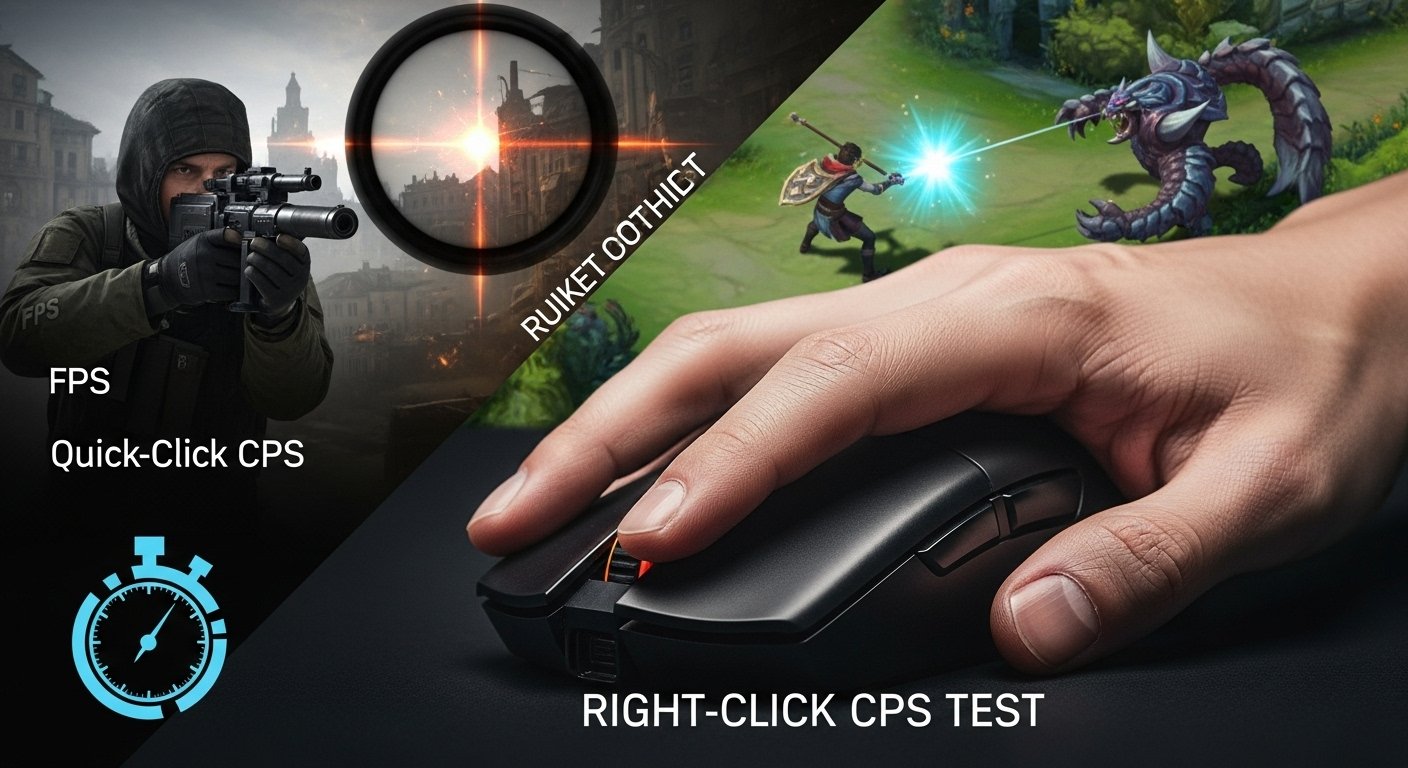The moment is electric. You’re in a tense FPS standoff, heart pounding as you hold a tight angle on a corner. Suddenly, an enemy player flashes into view. In that split second, a single, critical action determines the outcome: the speed of your right finger. The time it takes you to click and snap into your Aim Down Sights (ADS) is the razor-thin margin between landing a perfect headshot and staring at a gray respawn screen. Many players obsess over their primary fire speed, but they completely neglect the unsung hero of clutch plays. A Right-Click CPS Test is more than just a fun metric; it’s a vital diagnostic tool that measures a core mechanical skill essential for high-level play in today’s most competitive FPS and RPG games.
This guide will take you far beyond a generic CPS checker. We are going to conduct a deep dive into the critical, often-overlooked world of right-click speed. You will learn precisely why this specific skill is a game-changer, from the lightning-fast ADS snaps in tactical shooters to the pro-level kiting and spellcasting that dominate in RPGs and MOBAs. We’ll provide you with practical, game-specific drills to improve your performance and explore whether specialized gear can give you an edge. But first, you need to know your starting point. Before we explore the techniques of the pros, take a moment to measure your baseline with this dedicated mouse right-click test. This number is the first step on your journey to becoming a faster, smarter, and more dominant player.
What is the Right-Click CPS Test (And Why Isn’t It Just a Gimmick?)
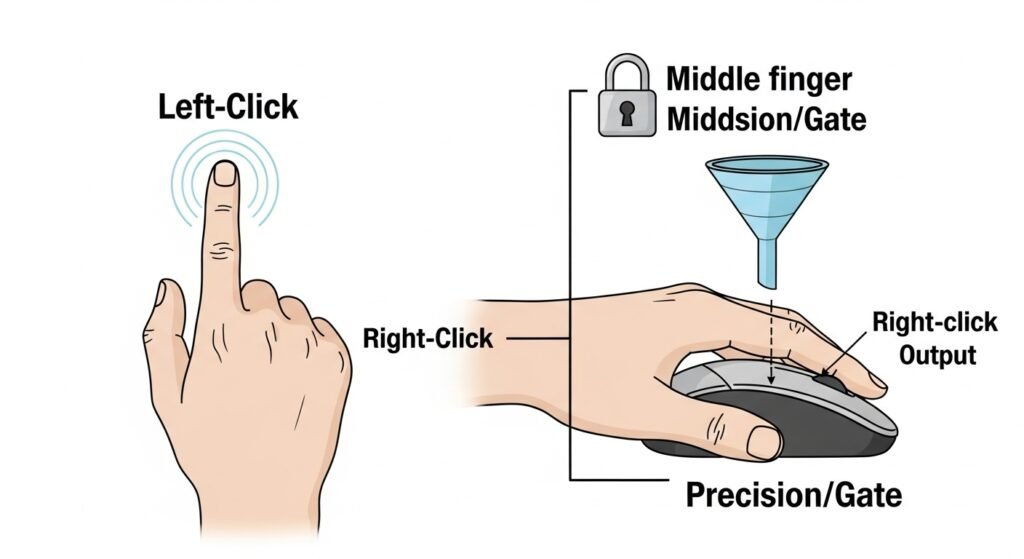
A Right-Click CPS Test is a specialized tool that measures the speed and consistency of your secondary mouse button, but its true value lies in what that action represents. While your left-click (primary fire) is about volume and sustained speed, your right-click is almost always about a single, decisive, and perfectly timed action. It’s the difference between a machine gun and a sniper’s trigger pull. One is about suppression; the other is about precision. This test isn’t a gimmick because it isolates and measures the speed of your “decision” button—the one you use to aim, scope, block, and activate critical abilities.
Beyond the Left-Click: Defining a Different Kind of Speed
For years, the gaming community has been obsessed with left-click CPS, driven by games like Minecraft where high click volumes are a huge advantage. This has led to the rise of techniques like the ones measured in a jitter click test. But in most modern FPS and RPG titles, a high left-click CPS is useless if your right-click is slow. The right-click is your gateway to accuracy. It’s the action that must happen before your primary fire can be effective. A slow right-click creates a bottleneck that renders your fast left-click irrelevant. Speed here isn’t about how many times you can click in ten seconds; it’s about how low you can get the delay on that single, crucial first click.
The Brutal Truth: Why Your Right-Click is Probably Slower Than You Think
Go ahead and try it. Take a standard 5-second click test with your index finger on the left button. Now, try the mouse right-click test with your middle finger. The results will likely surprise you. For the vast majority of right-handed users, the middle finger is physiologically less dextrous and has slower independent motor control than the index finger. As authoritative sources like the American Society for Surgery of the Hand often explain, the index finger has more independent muscle and tendon structures, making it naturally quicker and more precise. Because we use it less for primary actions, our right-click muscle memory is simply less developed. This built-in delay is a hidden handicap for millions of players.
A Personal Confession: The High-Level RPG I Almost Quit Because of My Slow Right-Click
I hit a wall in a high-level MMO. I was playing a healer, a role that required constant movement and situational awareness in chaotic 25-person raids. In that game, holding down the right mouse button was the only way to turn your character and the camera simultaneously. I kept dying to boss mechanics that I knew were coming. I’d see the fire on the ground, but my character would feel like it was stuck in mud. It took me weeks to realize the problem wasn’t my reaction time; it was my slow right-click finger. The tiny delay in pressing, holding, and dragging the mouse to turn was getting me killed. My slow “look” speed meant I couldn’t effectively kite enemies or navigate the battlefield. It was a humbling realization that a skill I never even thought about was single-handedly ruining my performance.
The FPS Game-Changer: How Right-Click Speed Dominates the Battlefield
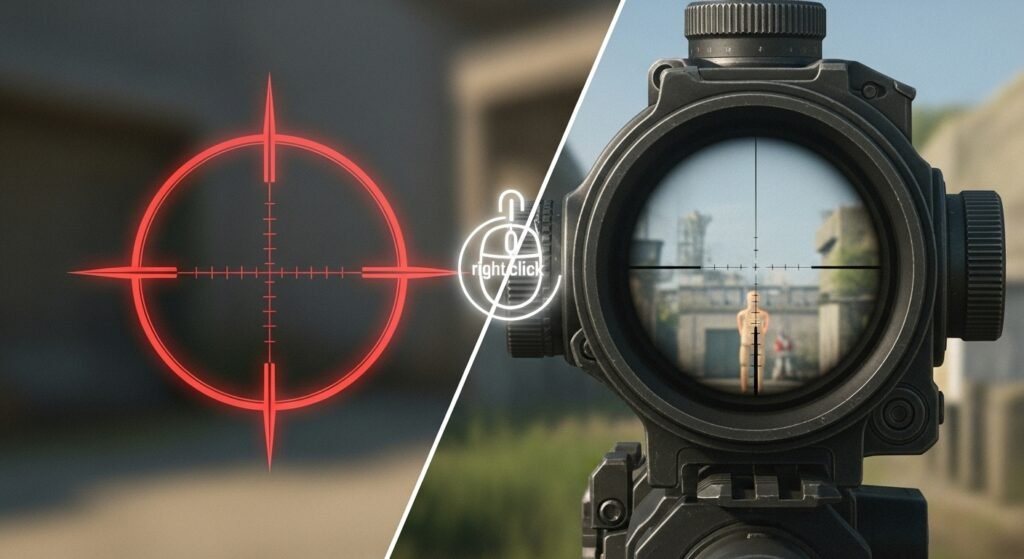
In the fast-twitch, low time-to-kill environment of modern First-Person Shooters (FPS), your right-click is the gatekeeper to accuracy. It’s the action that transforms your wide, hip-fire spray into a precise, lethal weapon. A slow right-click creates a fatal delay between seeing a target and being able to accurately engage them. On battlefields where duels are won and lost in under a second, this delay isn’t just a disadvantage; it’s a death sentence. This is where moving beyond theory and into practice with a Right-Click CPS Test becomes a critical training exercise.
Aim Down Sights (ADS): The Milliseconds That Matter Most
In games like Valorant, Call of Duty, or Apex Legends, the act of Aiming Down Sights (ADS) is fundamental. It drastically tightens your weapon’s bullet spread, making you far more accurate. The speed at which you can execute this right-click action—your “time to ADS”—is a massive component of your overall reaction time. You might have the fastest reaction in the world, but if your finger is slow to press the button, you’re giving your opponent a free head start. Training this specific, single-press action is about minimizing that delay until it’s nearly instantaneous. This speed is also influenced by your settings; finding the right balance can be just as important as your physical speed, which is why players often obsess over finding their perfect settings with tools like a mouse DPI test.
Scoping and Quick-Scoping: A Sniper’s Best Friend
For snipers, the right mouse button is the most important key on their entire setup. The ability to “quick-scope”—rapidly scoping in, firing, and scoping out—is a legendary high-skill technique that relies entirely on the perfect timing between your right and left clicks. A slow right-click makes the entire process feel sluggish and clunky, leaving you vulnerable while you’re trying to line up the shot. Pro snipers have their right-click timing down to a science, an instinct honed through thousands of hours of practice. This technique is so iconic that major gaming publications like PC Gamer have written extensive guides on its history and mechanics, cementing its place as a true test of player skill.
Secondary Fire and Special Abilities: Your Tactical Edge
In many FPS games, the right-click isn’t just for aiming. It often controls a weapon’s secondary fire mode (like an under-barrel grenade launcher) or a character’s critical special ability. Think of playing as Cassidy in Overwatch. An enemy Genji activates his Deflect. Your ability to instantly stop shooting (left-click) and throw your Flashbang (right-click) is what wins the duel. In these moments, your right-click finger needs to be just as fast and ready as your primary one. This is also where hardware reliability becomes crucial. You need to be certain that one press equals one action, which is why ensuring your mouse passes an ultimate double-click test is so important for competitive integrity. A faulty right-click that accidentally triggers twice could put a critical ability on cooldown, losing you the entire round.
The RPG & MOBA Advantage: Kiting, Spells, and Menu Mastery
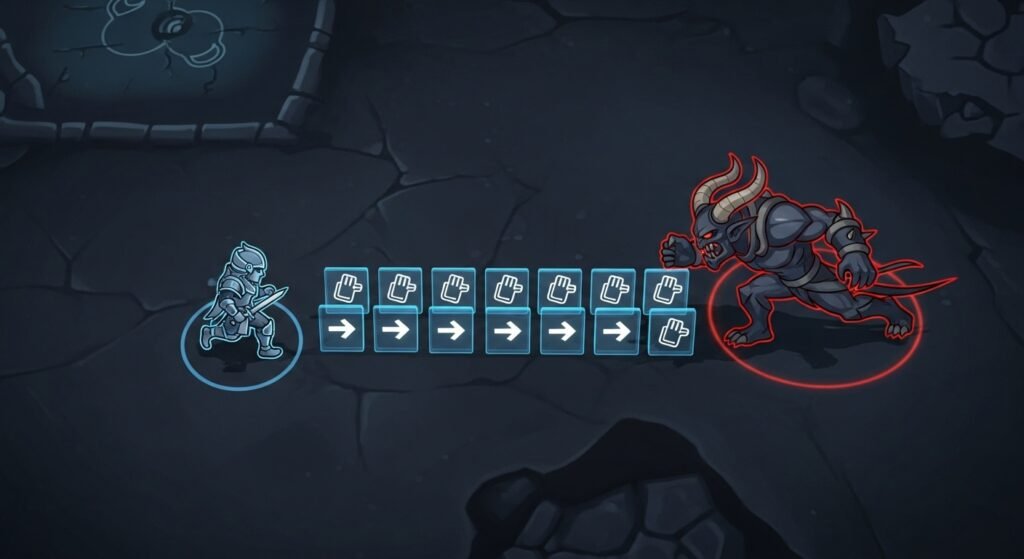
In Role-Playing Games (RPGs) and Multiplayer Online Battle Arenas (MOBAs), your right-click is the engine of your movement and interaction. While your left hand manages abilities on the keyboard, your right hand is constantly dancing, issuing hundreds of move commands, selecting targets, and navigating complex menus. A fast and responsive right-click finger is the foundation of high-level play, allowing for fluid character control that separates elite players from the pack. A slow right-click in these games feels like trying to run through mud.
Kiting and Animation Canceling: The Pro-Level Difference
Two advanced techniques in games like League of Legends or World of Warcraft rely almost entirely on rapid right-clicking:
- Kiting: This is the skill of attacking an enemy while moving away from them, maintaining maximum distance to minimize the damage you take. This involves a rapid sequence of attack-move-attack-move. The “move” command is almost always a right-click. A faster right-click allows you to issue move commands more quickly after an attack, creating more distance and making you a much harder target to hit.
- Animation Canceling: Most attack animations have a “back end”—a useless recovery period after the damage has been dealt. Pro players cancel this wasted time by issuing a move command (a right-click) the instant their damage connects, allowing them to start their next action sooner. This can significantly increase your overall damage output over a long fight. Mastering this rhythm is similar to the high-speed alternating clicks practiced in tools like the Kohi Click Test, which builds the fundamental dexterity required.
Instant Spellcasting and Contextual Actions
In the heat of battle, every moment is precious. Many RPGs and MOBAs use the right-click for critical, time-sensitive actions:
- Canceling Spell Casts: With “quick cast” settings enabled, you might hold down a keyboard key to aim a spell, but a quick right-click is what cancels it, allowing you to instantly dodge or choose a different ability. A slow finger here can mean wasting a crucial cooldown.
- Contextual Menus: Right-clicking on a player might bring up a menu to trade, inspect, or invite them to a group. Being able to navigate these menus quickly is a quality-of-life skill that adds up over thousands of hours of gameplay.
Case Study: How Improving My Right-Click Speed Made Me a Better Healer in an MMO
As I mentioned earlier, I almost gave up on a high-level MMO because my movement felt sluggish. After identifying the problem, I decided to treat it like any other skill. I started by using a Right-Click CPS Test as my training ground. My initial score was a pathetic 4.1 CPS. I set a goal to improve it. For five minutes every day before logging in, I would do drills on the test, focusing on short, controlled bursts of speed. I was training my middle finger to be as responsive as my index finger. After two weeks, my score was consistently above 6.5 CPS. The difference in-game was astounding. My character felt responsive and agile. I could effortlessly kite enemies, dodge mechanics I used to fail, and position myself perfectly to heal my team. That small, focused effort to improve a single metric fundamentally changed my performance and made the game fun again.
How to Improve Your Right-Click CPS: A Practical Training Guide
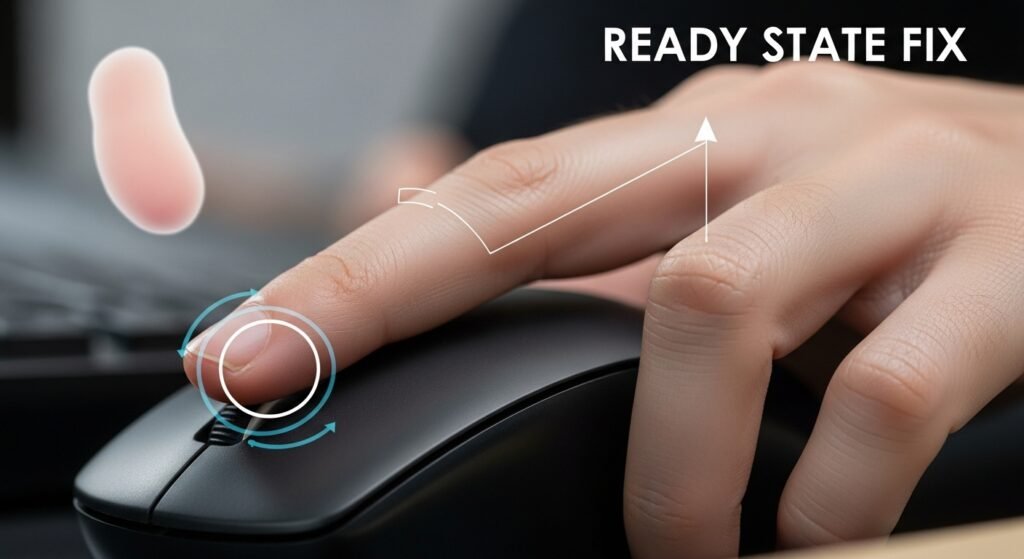
Improving your right-click speed is not about luck; it’s about focused, deliberate practice. Just like lifting weights to build muscle, you can perform specific drills to strengthen your muscle memory and reduce the delay in your middle finger. This is an active training process. By dedicating just a few minutes each day, you can see a significant, measurable improvement in your in-game performance.
Step 1: Measure Your Baseline with the Right-Click CPS Test
You cannot improve what you do not measure. The very first step is to get an honest assessment of your current speed. This gives you a starting number to track your progress against, which is a powerful motivator.
- Go to the dedicated mouse right-click test.
- Choose the 10-second timer for a good baseline.
- Use your normal grip and click as fast as you can with your middle finger.
- Write down your CPS score. This is your personal record to beat.
Step 2: The “ADS Snap” Drill for FPS Players
This drill is designed specifically to improve your “time to ADS.”
- Load into a practice range in your favorite FPS game (like the Firing Range in Apex Legends or an Aim Lab scenario).
- Stand a medium distance from a series of stationary targets.
- Place your crosshair between two targets.
- The drill is to perform one fluid motion: simultaneously flick your mouse to a target’s head and right-click to ADS.
- Do not fire. Simply snap to the target and scope in, then reset.
- Repeat this for 5 minutes, focusing on making the flick and the click feel like a single, instantaneous action.
Step 3: The “Kiting” Drill for RPG/MOBA Players
This drill builds the rapid, rhythmic clicking needed for kiting and animation canceling.
- Find a target dummy or a low-level enemy in your game of choice.
- Begin attacking the target.
- The moment your attack animation starts, right-click on the ground to move a short distance away.
- Immediately turn back and attack again.
- The goal is to create a tight, machine-like rhythm: Attack-Move-Attack-Move. You can even practice this rhythm offline using a simple click counter to alternate between left and right clicks, focusing on the cadence. Your goal is to minimize the amount of time you are standing still.
The Most Common Mistake That Creates Right-Click Lag
The biggest mistake isn’t a lack of speed; it’s a poor “ready state.” Most players rest their middle finger lazily, either hovering slightly above the right mouse button or resting on its far edge. This creates a physical distance your finger has to travel before the click can even begin. This pre-click travel time is a major source of lag.
The Fix: Train yourself to rest your middle finger lightly but directly on the right mouse button at all times. It should be in the exact position it needs to be to actuate the switch. By eliminating that tiny gap, you remove the travel time, ensuring that when your brain gives the command to click, the action is truly instantaneous.
The Gear You Need: Does a Special Mouse Make a Difference?
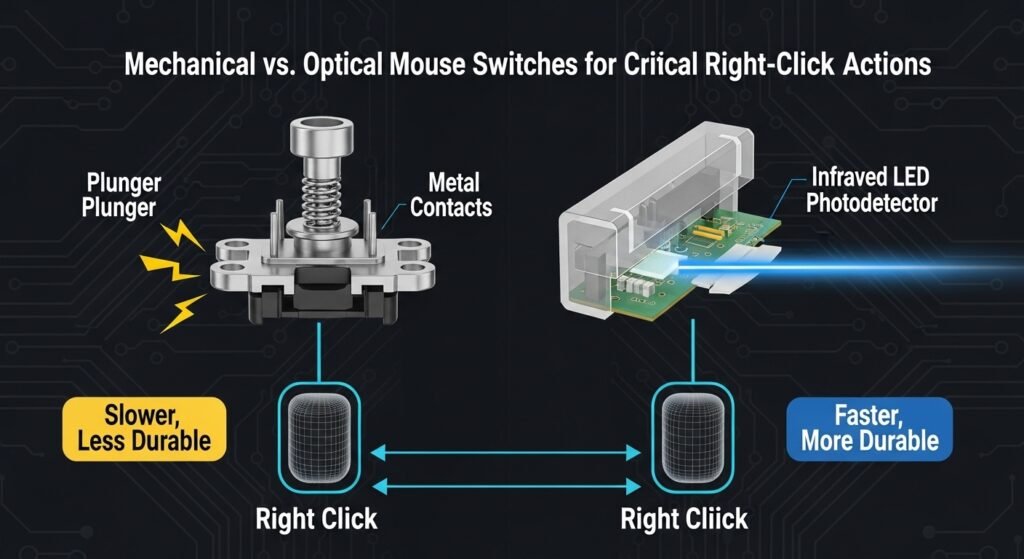
While a high-end gaming mouse won’t magically grant you skill, the right gear can remove physical limitations and provide a more responsive platform for the skills you’re building. For a critical action like your right-click, consistency and reliability are paramount. An uncomfortable or laggy mouse will actively sabotage your practice and your in-game performance. It’s not about buying the most expensive mouse; it’s about finding one that works as a natural extension of your hand.
Ergonomics: Why Your Grip is More Important Than Your Gear
You could have a mouse with the best sensor and switches in the world, but if it forces your hand into an unnatural position, your performance will suffer. The single most important factor is finding a mouse with a shape that is comfortable for you. An ergonomic shape allows your hand to stay relaxed, which in turn allows your fingers to be more agile and responsive.
Your grip style (palm, claw, or fingertip) heavily influences which mouse will feel best. For your right-click, you want a mouse that allows your middle finger to rest lightly and naturally on the button, ready to actuate at a moment’s notice. An awkwardly shaped mouse might force your finger to stretch or cramp, adding precious milliseconds of delay to every click.
Switch Types and Durability for Your “Ability” Button
The component underneath your right mouse button is called a switch, and not all are created equal. These switches are rated for a certain number of clicks (often 20 to 80 million) before they are expected to fail. Your right-click is often held down for extended periods (like when aiming) or used for single, critical presses, which puts a different kind of stress on it than the rapid spam of a left-click.
- Mechanical Switches: These are the traditional standard, offering a tactile click. They are reliable but can wear out over time.
- Optical Switches: A newer technology used by brands like Razer, these use a light beam to register a click. They are often faster and significantly more durable because there are no metal contacts to wear down. As explained by hardware experts at sites like Tom’s Hardware, this can lead to a longer lifespan and prevent issues like accidental double-clicking. You need to be sure your right-click is reliable, which is why periodically checking it with an ultimate double-click test is a good idea to ensure it’s not failing.
Fine-Tuning Your Settings: Polling Rate and DPI Considerations
Your mouse’s software settings are a crucial part of the performance puzzle. Two settings are particularly important for a responsive right-click:
- Polling Rate: This is how often your mouse reports its position to your computer, measured in Hz. For competitive gaming, this should always be set to the highest possible value, typically 1000Hz. A lower polling rate introduces input lag, which is a disaster for fast-twitch actions. You can verify your mouse’s settings with a polling rate checker.
- DPI (Dots Per Inch): This is your mouse’s sensitivity. While it doesn’t directly affect your click speed, an uncomfortable DPI can ruin your aim, making your fast right-click useless. It’s essential to find a DPI that feels right for you, which you can do with a mouse DPI test and by experimenting in-game until your aim feels both smooth and controllable.
Frequently Asked Questions (FAQ)
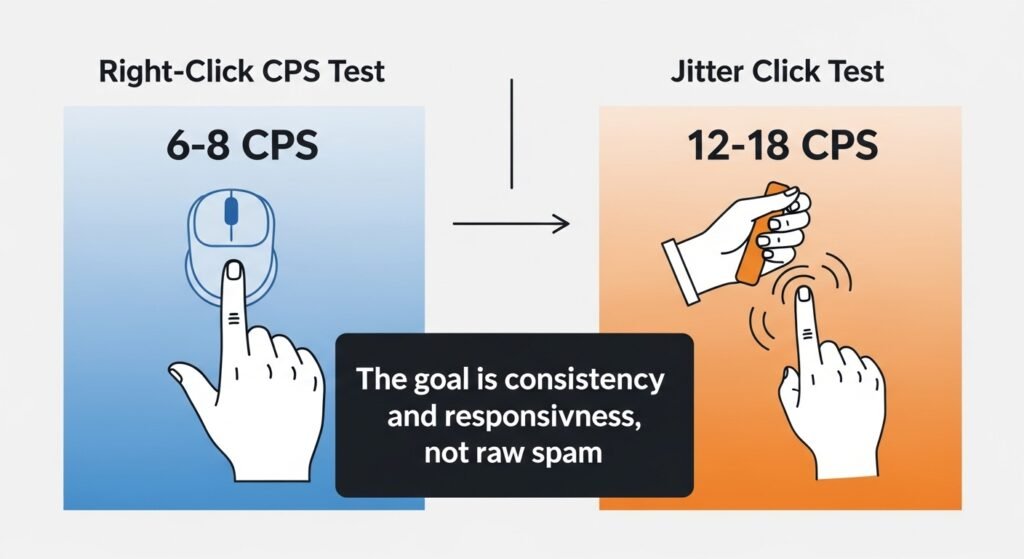
You’ve learned the why and the how, but a few specific questions are likely on your mind. Let’s clear them up with straightforward answers to help you fully understand the role of the Right-Click CPS Test in your training.
Is right-click CPS as important as left-click CPS?
What is a good right-click CPS score for a competitive gamer?
Can practicing this damage my mouse?
How is right-click speed different from reaction time?
Conclusion
We’ve explored the hidden world of the right-click, elevating it from a simple secondary button to its rightful place as a cornerstone of high-level gaming performance. You now understand that this is not just another abstract metric. The speed measured by a Right-Click CPS Test is a direct reflection of your ability to aim, to move, and to react with precision when it matters most. It is the unsung hero behind every clutch sniper shot, every perfectly-timed spell, and every flawlessly executed kite. The journey to becoming a faster player isn’t just about training your primary finger; it’s about ensuring every tool in your arsenal is just as sharp.
Remember that tense FPS duel from the beginning, where victory and defeat were decided in a fraction of a second? You are no longer the player who is a millisecond too slow. Armed with this knowledge and these training drills, you now have the power to be the one who snaps to the target faster, who wins the duel, and who controls the engagement. Your path to improvement starts with a single number. So, take the 10-second mouse right-click test right now and discover your own baseline.
Which game are you most excited to improve in with a faster right-click?

Hello, I’m John Harbour, a software developer passionate about creating innovative and accessible AI tools. As the creator of cps-checker.com, I enjoy building useful software and writing blogs to help people get the most out of my creations.

